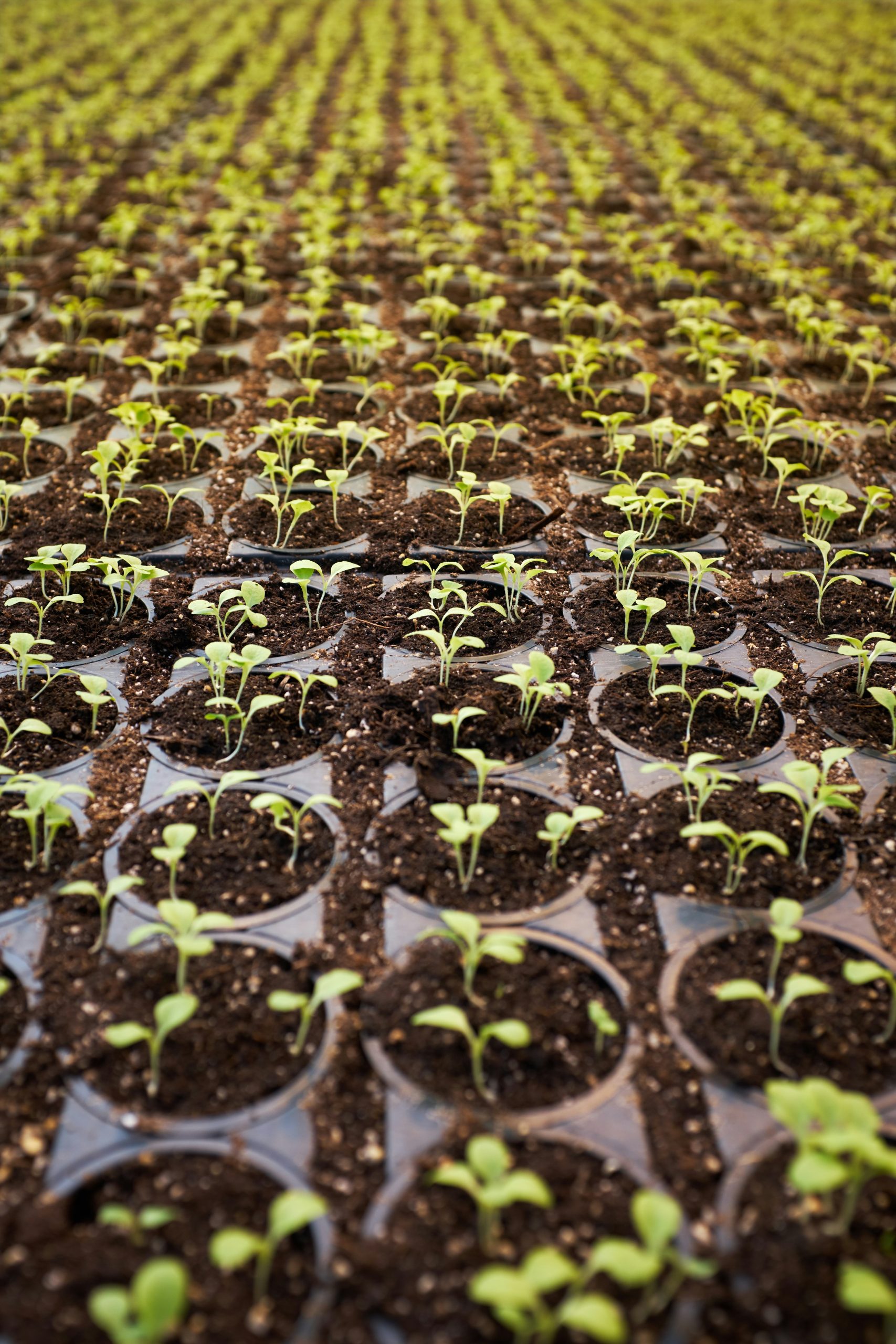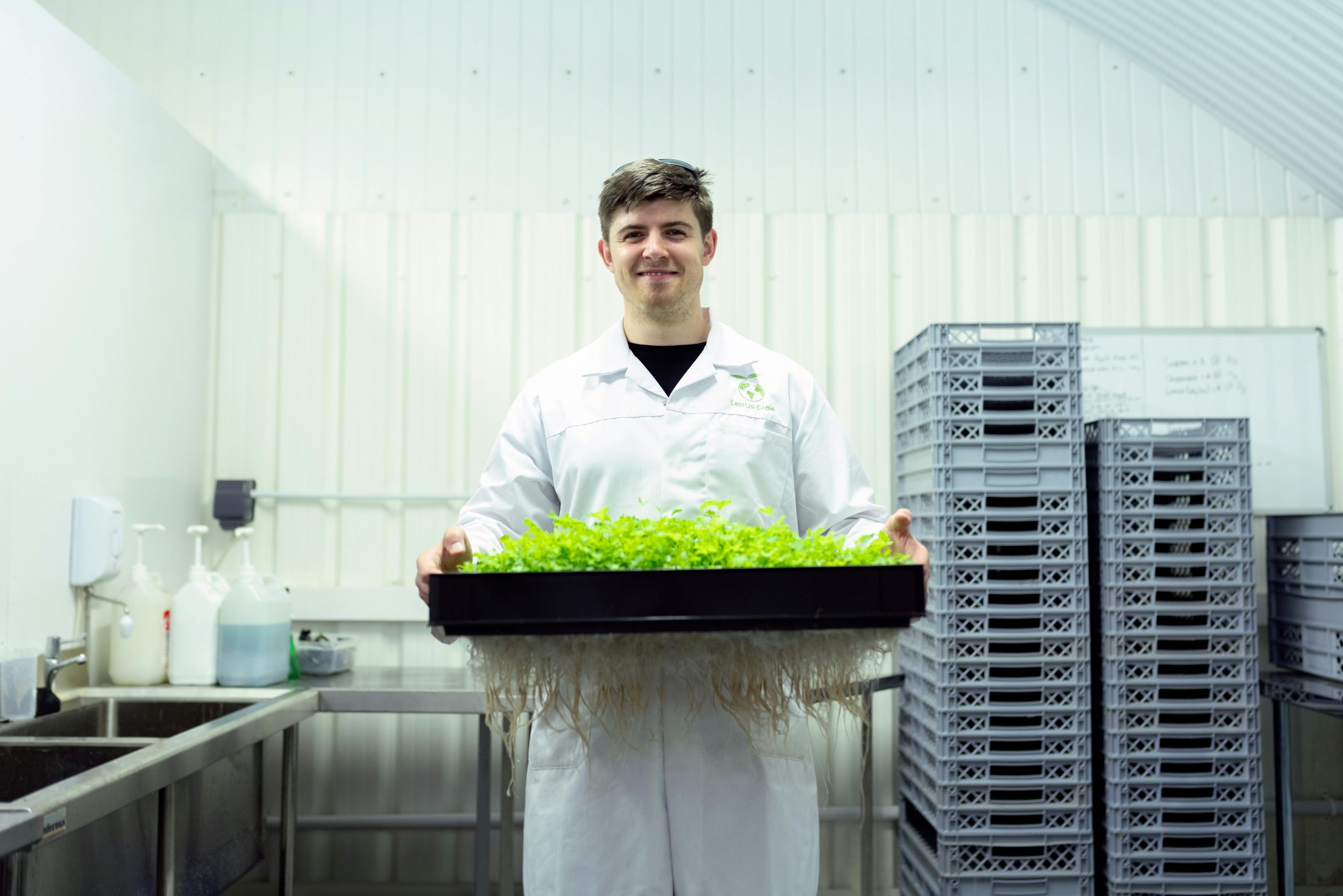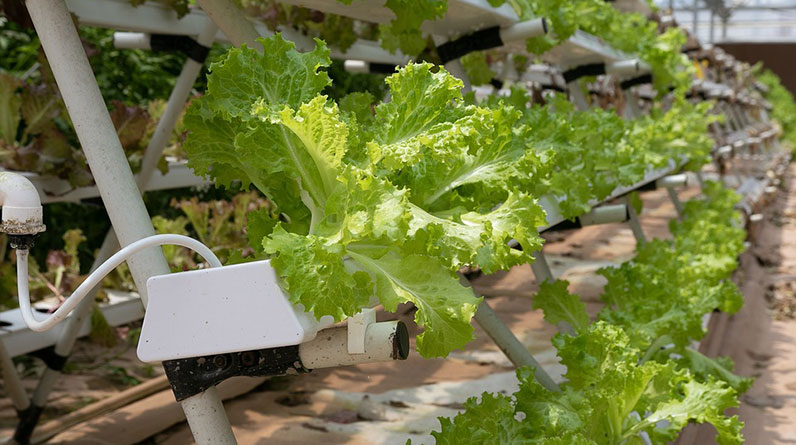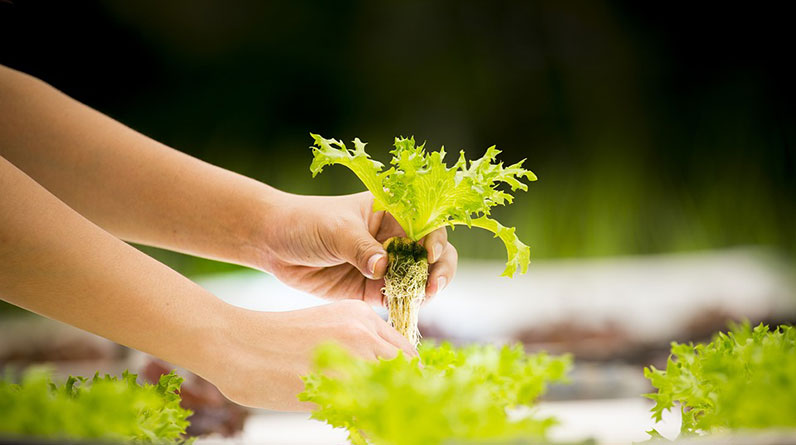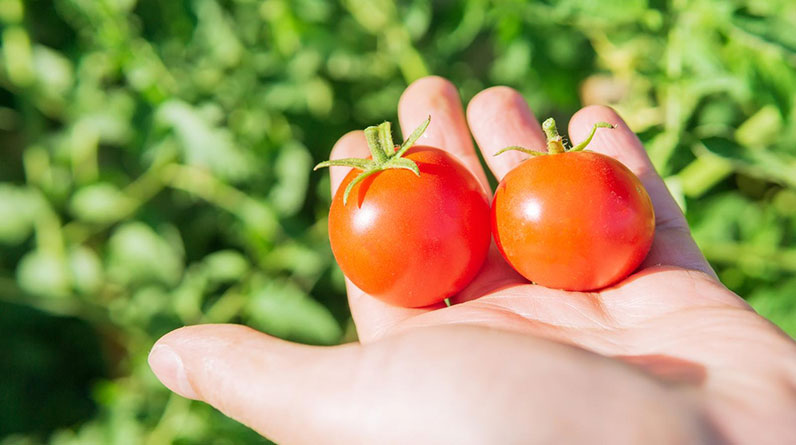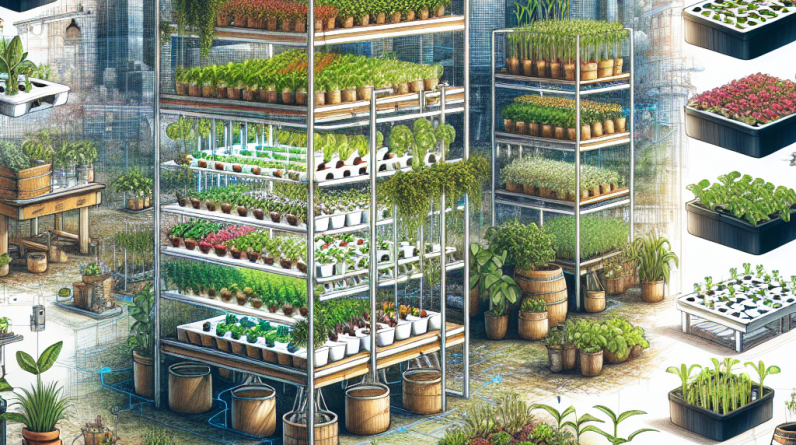
- 1. Kratky Method
- 2. Nutrient Film Technique (NFT)
- 3. Ebb and Flow System
- 4. Deep Water Culture (DWC)
- 5. Aeroponics
- 6. Wick Systems
- 7. Vertical Hydroponics
- 8. Floating Raffle System
- 9. Cryptohyponics
- 10. Smart Home Hydroponic Kits
1. Kratky Method: Simple and Efficient
Overview of the Kratky Method
The Kratky method is one of the simplest forms of home hydroponic systems, perfect for beginners. It requires no pumps or electricityâa reservoir filled with nutrient solution and a net pot with the plant. As the plant grows, the water level drops, creating an air gap that supplies oxygen to the roots. This low-maintenance system is gaining popularity in 2025 as a sustainable option for small-scale home growers.
Many home gardeners in 2025 are turning to the Kratky method because it reduces setup costs and complexity. Itâs ideal for growing leafy greens, herbs, and small vegetables. Plus, it can be scaled easily for larger households or community gardens, making it a versatile choice for home hydroponic systems.
Advantages and Practical Tips
The key advantages of the Kratky method include minimal equipment, low ongoing costs, and ease of use. To maximize growth rates, ensure your nutrient solution is balanced and monitor water levels regularly. Using opaque containers helps prevent algae growth that can compete with your plants for nutrients.
For best results, place your Kratky system in a spot with adequate sunlight or use grow lights to supplement. Regularly check the nutrient solution and top up as necessary, especially during hot weather when evaporation increases. This system is perfect for off-grid living and urban settings with limited space.
2. Nutrient Film Technique (NFT): Continuous Flow
How NFT Works
The Nutrient Film Technique, or NFT, involves a thin film of nutrient-rich water flowing through channels where plant roots are suspended. This continuous flow provides constant access to nutrients and oxygen, resulting in rapid plant growth. NFT is highly efficient and works well for small to medium-sized plants in the comfort of your home.
In 2025, DIY enthusiasts are setting up NFT systems using recycled pipes or commercial kits designed specifically for home use. The key is maintaining a consistent flow rate to prevent the roots from drying out or becoming waterlogged. Automation with timers and flow regulators streamlines operation for busy households.
Tips for Success with NFT
Ensure your channels are tilted at the correct angleâtypically 1-3%âto facilitate gravity-assisted flow. Clean your system regularly to prevent algae and biofilm buildup, which can clog the flow and compromise plant health. Incorporating sensors and smart controllers can optimize nutrient delivery, making NFT a tech-forward choice in 2025’s smart home trends.
Ideal for growing lettuce, herbs, and strawberries indoors or on patios, NFT hydroponic systems can be customized for various space constraints and plant varieties. They also use less water compared to traditional soil gardening, which supports sustainable living.
3. Ebb and Flow System: Flood and Drain
Working Principle of Ebb and Flow
The ebb and flow, or flood-and-drain, system periodically floods the grow tray with nutrient solution and then drains it back into the reservoir. This cycle provides plants with moisture, oxygen, and nutrients in pulses, mimicking natural watering patterns. With adjustable timers, this method can be tailored for different crops and growth stages.
In 2025, many home hydroponic growers are adopting ebb and flow systems for their flexibility and high yields. They are particularly effective for larger plants and root vegetables, offering a controlled environment for optimal growth rates.
Implementing an Ebb and Flow System
When building your system, ensure your pump and timer are reliable, as they determine the flooding schedule. Using a flood tray with ample drainage points prevents waterlogging and root rot. Regularly test your nutrient concentration and pH levels to stay within optimal ranges, typically pH 5.5 to 6.5.
This system is great for urban farms and those with limited outdoor space but a willingness to invest some time in setup and maintenance. Itâs a popular choice among hobbyist home gardeners aiming for faster growth and higher yields in 2025.
4. Deep Water Culture (DWC): Roots in Nutrient-Rich Water
Basics of DWC
Deep Water Culture involves suspending plant roots in a nutrient-dense oxygenated water reservoir. This system ensures that roots are constantly submerged, providing an ideal environment for rapid growth. In 2025, DWC systems are favored for their simplicity and effectiveness, especially for leafy greens and small vegetables.
Many home growers utilize air stones connected to air pumps to oxygenate the water, preventing root rot and promoting healthy development. Because the entire system is submerged, maintaining proper oxygenation is crucial for success.
Optimizing DWC for Fast Growth
Use high-quality, food-grade containers and aerate the water continuously. Maintaining a steady temperature (around 65-75°F) supports healthy roots and nutrient absorption. Monitoring and adjusting pH and nutrient levels regularly will boost growth rates significantly in 2025.
With modern automation and small-scale aquaponic accessories, DWC can be seamlessly integrated into your home environment, supplying fresh greens and herbs quickly and efficiently.
5. Aeroponics: Airborne Roots, Fast Growth
Understanding Aeroponics
Aeroponics grows plants with suspended roots misted regularly with nutrient solution. This approach delivers high oxygen levels directly to the roots, accelerating growth and boosting yields. In 2025, aeroponics is making a comeback in advanced home systems due to its efficiency and space-saving design.
Though more complex to set up, modern aeroponic systems utilize sensors and automated misting schedules for optimal performance, making them accessible for dedicated home growers in 2025.
Practical Tips for Home Aeroponics
Ensure your misting cycles are frequent enough to keep roots moist but not waterlogged. Regularly inspect the system for clogs or malfunctions to prevent plant stress. Incorporate backup power supplies and water filters to maintain system reliability.
This method excels in growing high-value crops like herbs, lettuce, and strawberries, with faster harvests compared to traditional soil gardening, making it ideal for high-yield home setups.
6. Wick Systems: Passive and Cost-Effective
How Wick Systems Work
Wick systems rely on capillary action to draw nutrient solution from a reservoir up to the plant roots through wicks, requiring no pumps or electricity. This passive setup is perfect for small spaces and beginner gardeners aiming for low-maintenance operation.
In 2025, innovative materials and designs make wick systems more efficient, supporting herbs, small leafy greens, and flowers grown indoors or on balconies.
Design Tips and Best Uses
Choose absorbent wicks and ensure they reach the nutrient reservoir and root zone securely. Using opaque containers helps prevent algae growth, keeping the nutrient solution clean. Regularly checking water levels and replacing solution keeps plants healthy.
Wick systems are especially suitable for indoor environments with limited space or as educational projects for kids and beginners in home hydroponic cultivation.
7. Vertical Hydroponics: Space-Saving and Scalable
Vertical System Design
Vertical hydroponic systems maximize growing space by stacking multiple layers of plants. They often use hydroponic towers or wall-mounted setups, making them ideal for urban homes with limited footprint. In 2025, vertical systems integrate smart watering and lighting solutions for maximum efficiency.
Advantages for Home Growers
Vertical systems allow home gardeners to produce a large volume of greens and herbs in a small area. They are easy to customize with DIY projects or commercial kits, making them highly adaptable. The stacked design facilitates better air circulation and easier harvesting.
To succeed, ensure proper water distribution and light penetration across all layers. Consider using grow lights with adjustable spectrum settings to enhance plant growth in dimmer conditions.
8. Floating Raffle System: Aquatic-Based Hydroponics
Concept and Setup
Floating raffle, or raft system, involves placing plants in floating boards on top of nutrient solution-filled tanks. Itâs commonly used for growing strawberries, lettuce, and herbs indoors or outdoors. In 2025, home-based floating systems combine aesthetics with productivity, suitable for patios or indoor water features.
Maintenance and Growth Optimization
Regularly monitor water quality and nutrient levels. Keeping water oxygenated with aeration devices supports healthy roots. Elevate the floating platform to adjust plant height and optimize light exposure for faster growth.
This method is popular among hobbyists seeking decorative yet productive home hydroponic systems.
9. Cryptohyponics: Experimental and Innovative
Emerging Techniques
Crypto-hyponics involves experimental setups combining elements of various hydroponic methods with digital automation. Itâs ideal for tech-savvy enthusiasts who want to push the boundaries of home hydroponics in 2025. Think of automated nutrient delivery, app-controlled lighting, and real-time monitoring.
Getting Started with Innovation
Start small with modular systems, integrating sensors and controllers to track pH, EC, and temperature. Use open-source platforms to customize your system’s behavior and optimize plant growth rates. This cutting-edge approach can significantly increase yield speeds when fine-tuned properly.
Ideal for experimental home farms aiming for maximum efficiency and data-driven cultivation strategies.
10. Smart Home Hydroponic Kits: Turnkey Solutions for 2025
Features of Modern Kits
Smart hydroponic kits are all-in-one solutions that include automated watering, lighting, and climate control. They connect to mobile apps, allowing you to monitor and adjust settings remotely. In 2025, these kits are highly popular for their convenience and tech integration, making home hydroponic systems accessible to everyone.
Tips for Choosing the Best Kit
Look for kits that offer adjustable grow lights, integrated sensors, and user-friendly apps. Consider space constraintsâcompact designs are perfect for apartments. Read reviews and compare features to ensure your system supports a variety of plants for faster growth in 2025.
These turnkey solutions simplify the complexities of home hydroponics, helping you achieve faster and more consistent results.
Frequently Asked Questions
Q1. What are the best home hydroponic systems for beginners in 2025?
The Kratky method, wick systems, and simple NFT setups are excellent starting points because of their low cost and ease of use.
Q2. How can I ensure faster growth in my home hydroponic systems?
Maintain proper nutrient balance, pH levels, and lighting conditions. Using automation and smart controls can optimize environmental factors, leading to quicker yields.
Q3. Are home hydroponic systems cost-effective?
Yes, especially when considering reduced water use and higher crop yields. Systems like wick and Kratky are particularly budget-friendly, making them ideal for home use.
Q4. What are some popular plants to grow with home hydroponic systems in 2025?
Leafy greens, herbs, strawberries, and small vegetables like cherry tomatoes are among the top choices due to their high growth rate and adaptability to various systems.
Q5. How do I select the right home hydroponic system for limited space?
Assess your available space and choose systems like vertical hydroponics, floating rafts, or compact NFT setups. These optimize limited space while maximizing production.
Conclusion
In 2025, mastering the top 10 effective home hydroponic systems can significantly accelerate your plant growth and harvest times. Whether you’re a beginner or a seasoned gardener, choosing the right systemâlike a simple Kratky or advanced aeroponicsâcan make all the difference. Incorporating smart technology and innovative designs ensures you get the fastest, freshest vegetables and herbs right in your home. Embrace these cutting-edge home hydroponic systems for a greener, more self-sufficient lifestyle this year!
Related Content
- The Benefits of Year-Round Cultivation in Hydroponic Vegetable Gardening
- The Ultimate Guide to Hydroponic Growing for Beginners: 7 Effective Tips for 2025
- Grow Nutritious Food with Minimal Space
- Enhancing Plant Growth with the Right Hydroponic Growing System Accessories
- A Simple Way to Grow More with Less



